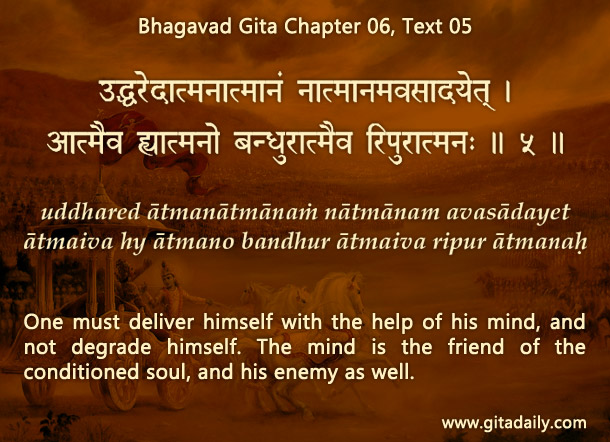There is much mystery associated with the mind: what it exactly is and what it exactly does. The Bhagavad-gita’s teachings offer us a three-level model of the self, wherein the mind is the intermediate link between our spiritual essence (souls) and our physical instrument (the body).
The mind is an instrument meant to do two things that are essential for our functioning. However, it can also engage in two other activities that may act against our interests. Let’s explore these four features of the mind.
Transmitter: In this role, the mind acts as the route through which our consciousness, emerging from the soul as its natural energy, passes through the mind to the body and thereafter to the outer world. The mind takes in sensory stimuli from the outer world and passes them to the soul, thereby enabling us to perceive. Such perception can be compared to a pilot operating on autopilot during times of low or no visibility while flying an aircraft. The hardware and software combination of the airplane assists the pilot in “seeing.” Similarly, the soul, presently in material consciousness and covered by the material body and mind, “sees” through the perception happening at the level of the senses and acts through the transmission occurring through the mind.
Processor: In this role, the mind helps us make sense of the sensory information coming in from the outer world by combining it with our past knowledge. This enables us to bring our previous experiences to bear on our present, thereby enhancing our understanding of our situations and improving our responses to them.
However, the mind can malfunction in two ways:
Distractor: The mind distracts us when it wanders off anywhere and everywhere except our current activity. During such times, our consciousness gets split between the mind and the body. Depending on the extent of this split, we may either be slightly aware of our physical surroundings or completely oblivious to them, as we become lost in our thoughts.
Distorter: The mind can distort our consciousness by combining its past experiences and impressions with present perceptions, leading to an inaccurate sense of what is happening in the present. For instance, if we were hurt by a large-bodied person in the past, the sight of a similarly sized person might trigger within us a fight-or-flight response, even if that person has no hostile intentions and is merely a gentle giant.
Understanding how the mind functions is crucial to harness its potential for our benefit and prevent it from working against us — which is the key recommendation of the Bhagavad-gita (06.05)
Summary:
When the mind functions as a transmitter and processor of consciousness, it works for us — but when it acts as a distractor or distorter of consciousness, it works against us.
Think it over:
- What is the mind?
- What are the mind’s two main functions? Explain.
- What are the mind’s two main malfunctions? Explain.
***
06.05: One must deliver himself with the help of his mind, and not degrade himself. The mind is the friend of the conditioned soul, and his enemy as well.
Audio explanation of the article is here: https://gitadaily.substack.com/p/two-functions-of-the-mind-and-its

To know more about this verse, please click on the image

Mind is source of virtues and vices
🙏🙏🙏
Thank You very much. 🙏
Happy to be of service.